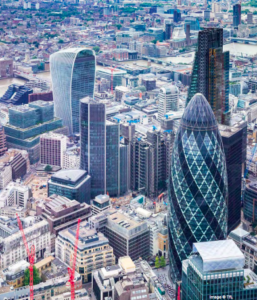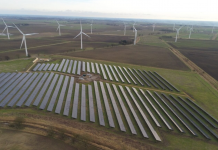 Energy efficiency will be key to decarbonising London, regardless of the technology choices it makes over the coming decades, according to Sadiq Khan.
Energy efficiency will be key to decarbonising London, regardless of the technology choices it makes over the coming decades, according to Sadiq Khan.
Meanwhile, government must commit to subsidising renewable heat and supporting heat networks beyond 2021, when the current regime will close.
If it cannot make decisions fast enough, it should hand over the money and the power to do so, suggests the Greater London Authority.
The GLA has published a high level document detailing the actions and options it plans to take from here to 2050 in order to cut emissions from buildings and transport to zero.
Pathways include major deployment of heat networks, heat pumps, using hydrogen in the existing gas network and could include a mix of all technologies.
However, energy efficiency is central to all four scenarios, though the report notes the government’s decision to drastically cut back funding in 2012 and that the remaining programmes are difficult for people to access.
It calls for more ambitious and more rapid government action to decarbonise energy networks, not just the power sector, or for government to devolve funding and powers to London.
Act now…
While national policy decisions will affect longer-term aspects of the plan, the report said immediate action should be taken to rapidly scale up energy efficiency improvements, roll out heat networks and heat pumps, and taking a coordinated approach to electric vehicle charging.
It envisages the need for London to take a role in co-ordinating both EV infrastructure and managing peaks electrification of transport will create on the power network.
… or pay later
Delaying energy efficiency actions by even four years will add £2.5bn to the overall bill, according to the plan. Building retrofit rates must increase by a factor of four, it suggests.
The GLA will make its own estate more efficient and by 2025 commits to making its vehicle fleet ‘zero emission capable’, with heavy vehicles to follow in 2030.
Meanwhile, it aims to have a gigawatt of PV installed within 12 years, and 2GW by 2050.
15% of heat demand should be met by heat networks or heat pumps within 12 years, it states.
The GLA is also working to co-ordinate and increase flexibility provision – or demand-side response – from public and private sector organisations in the capital.
It thinks a gigawatt of peak flexibility could be unlocked by 2050.
See the plan here.
Related stories:
Meef: £500m more beef for energy efficiency funding
Boiler scrappage scheme launched for London firms
How to balance the grid using energy efficiency as a tradeable resource
Decarbonising heat: free report
Free 2018 demand-side response report
Free 2018 battery storage report
Click here to see if you qualify for a free subscription to the print magazine, or to renew.
Follow us at @EnergystMedia. For regular bulletins, sign up for the free newsletter.



